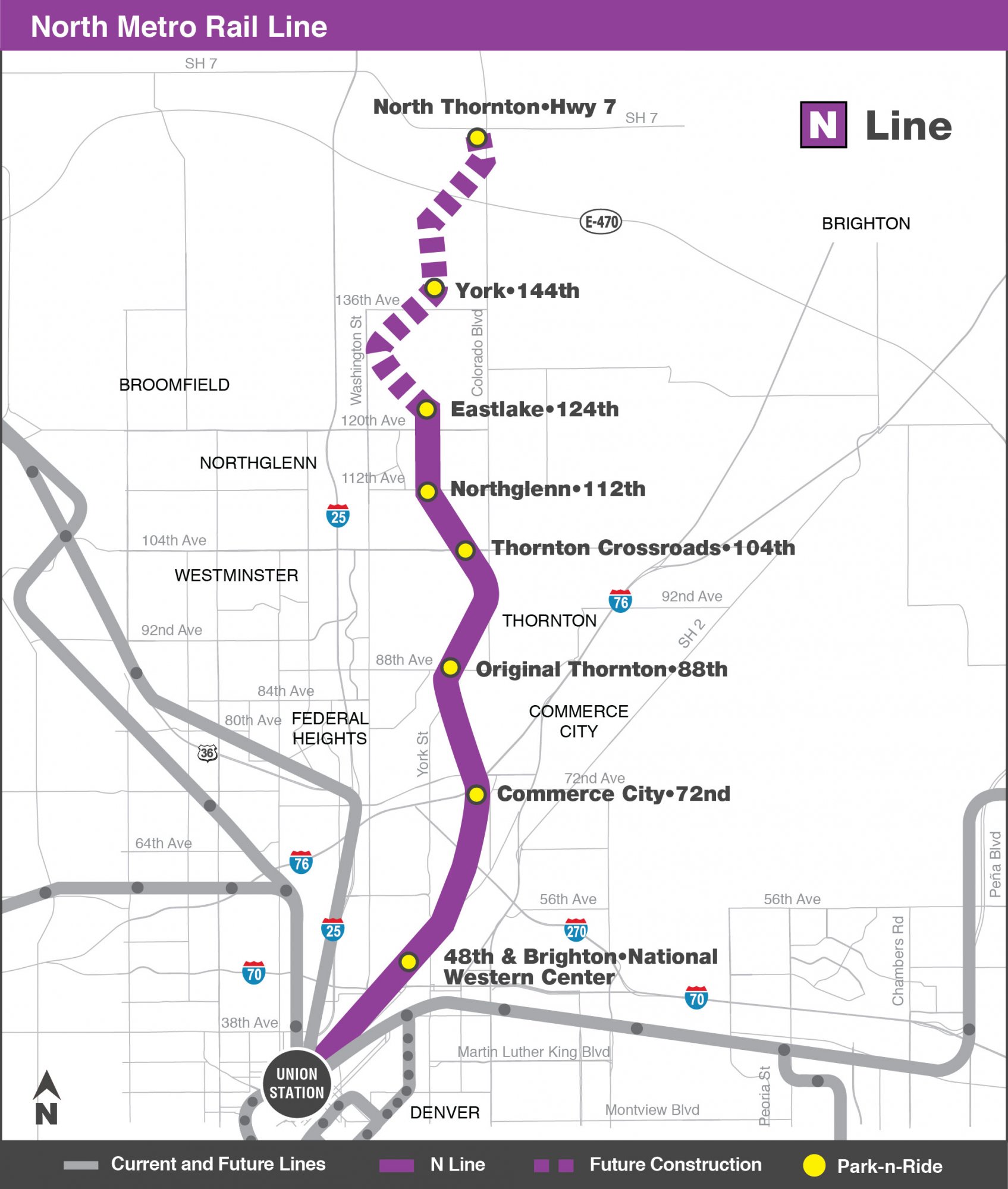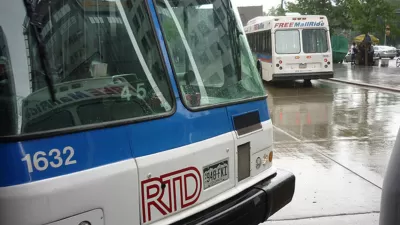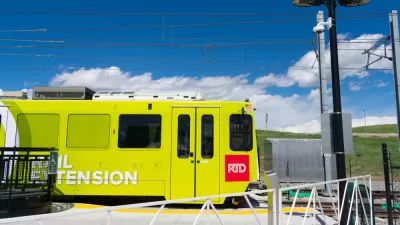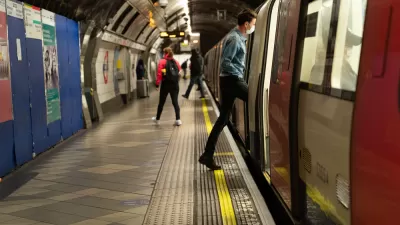The N Line between Denver and its northern suburbs opens today to the public, but N Line trains are expected to carry far fewer passengers, and lower frequencies, than originally planned.

The Regional Transportation District, the transit provider for the Denver region, is opening the N Line rail line between Downtown Denver and the city's Northern Suburbs.
An article by John Aguilar prepares the public for what will be a very strange opening indeed, with the coronavirus gutting transit ridership in the Denver region as in other parts of the country. In Denver, transit ridership has declined by 64.4 percent, according to Aguilar, during the second quarter of 2020 compared to the previous year.
The 13-mile commuter rail line connecting Union Station to Commerce City, Northglenn and Thornton is one of the only major transit projects anywhere to go operational in the midst of a global health crisis, and its launch next week raises fresh questions about what the future of public transportation will look like once the coronavirus fades into memory.
Because of the pandemic's effect on ridership, the "N-Line will likely carry less than half of the projected 5,600 to 8,100 daily riders it was expected to have at the end of its first year," reports Aguilar. RTD service designer have cut headways on the N-Line before it's even open. Trains will run every 30 minutes, down from the originally planned 20 minutes.

N Line map courtesy of the Regional Transportation District
FULL STORY: Opening of N-Line to Denver’s north suburbs a rare “bright spot” for COVID-battered transit sector

Maui's Vacation Rental Debate Turns Ugly
Verbal attacks, misinformation campaigns and fistfights plague a high-stakes debate to convert thousands of vacation rentals into long-term housing.

Planetizen Federal Action Tracker
A weekly monitor of how Trump’s orders and actions are impacting planners and planning in America.

In Urban Planning, AI Prompting Could be the New Design Thinking
Creativity has long been key to great urban design. What if we see AI as our new creative partner?

Pedestrian Deaths Drop, Remain Twice as High as in 2009
Fatalities declined by 4 percent in 2024, but the U.S. is still nowhere close to ‘Vision Zero.’

King County Supportive Housing Program Offers Hope for Unhoused Residents
The county is taking a ‘Housing First’ approach that prioritizes getting people into housing, then offering wraparound supportive services.

Researchers Use AI to Get Clearer Picture of US Housing
Analysts are using artificial intelligence to supercharge their research by allowing them to comb through data faster. Though these AI tools can be error prone, they save time and housing researchers are optimistic about the future.
Urban Design for Planners 1: Software Tools
This six-course series explores essential urban design concepts using open source software and equips planners with the tools they need to participate fully in the urban design process.
Planning for Universal Design
Learn the tools for implementing Universal Design in planning regulations.
planning NEXT
Appalachian Highlands Housing Partners
Mpact (founded as Rail~Volution)
City of Camden Redevelopment Agency
City of Astoria
City of Portland
City of Laramie





























